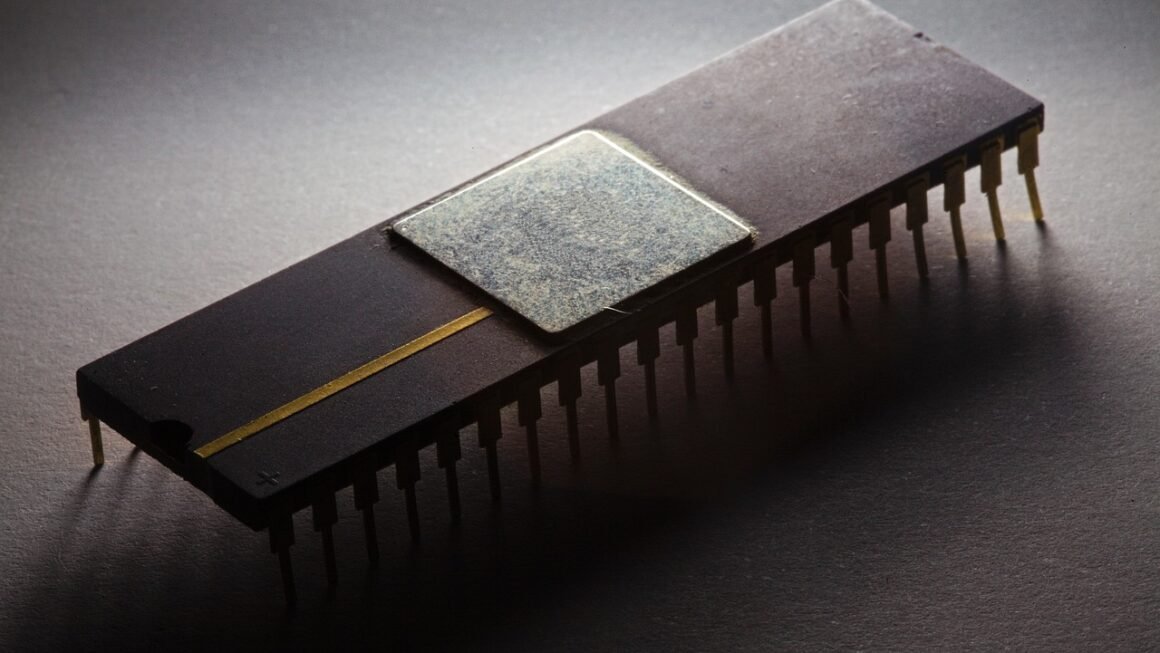Biotechnology, a field that marries the power of biology with technological innovation, is rapidly transforming industries ranging from medicine to agriculture. From engineering drought-resistant crops to developing life-saving vaccines, biotechnology’s potential to address global challenges is immense. This article delves into the core principles, applications, and future trends of this dynamic and ever-evolving field, providing a comprehensive overview for anyone curious about the science shaping our world.
What is Biotechnology?
Biotechnology is, at its core, the manipulation of biological systems – living organisms or their components – to develop new technologies and products. It’s a broad field encompassing a diverse range of disciplines, including genetics, microbiology, biochemistry, and engineering. The goal is to utilize biological processes for practical purposes, whether it’s improving human health, enhancing food production, or protecting the environment.
Traditional vs. Modern Biotechnology
- Traditional Biotechnology: This involves age-old practices like fermentation in brewing beer and winemaking, or selective breeding of plants and animals to improve desired traits. These techniques, while not relying on advanced scientific understanding, have profoundly shaped our diets and agricultural practices for millennia.
- Modern Biotechnology: This focuses on advanced techniques such as genetic engineering, recombinant DNA technology, and cell culture to modify organisms at the molecular level. This precision allows for the development of targeted therapies, genetically modified crops, and other cutting-edge applications.
Key Disciplines within Biotechnology
Biotechnology is a multidisciplinary field, drawing from several key areas:
- Genetics: Understanding the structure and function of genes is crucial for manipulating and improving biological systems.
- Microbiology: Studying microorganisms (bacteria, viruses, fungi) allows us to harness their capabilities for various applications, such as producing antibiotics or bioremediation.
- Biochemistry: Understanding the chemical processes occurring within living organisms is essential for developing new drugs, enzymes, and other biochemical products.
- Molecular Biology: This field focuses on the molecular basis of biological activity, including the interactions between DNA, RNA, and proteins.
- Bioinformatics: This is the use of computational tools and databases to analyze and interpret biological data, accelerating research and development.
- Actionable Takeaway: Biotechnology isn’t just a futuristic concept; it builds upon centuries of understanding and application. Identifying the key disciplines helps appreciate the breadth of knowledge required.
Applications of Biotechnology
Biotechnology’s impact is felt across numerous sectors, offering solutions to some of the world’s most pressing challenges.
Biotechnology in Healthcare (Red Biotechnology)
- Drug Discovery and Development: Biotechnology plays a pivotal role in identifying drug targets, developing novel therapies, and improving drug delivery systems. For example, monoclonal antibodies are used to treat cancer and autoimmune diseases.
- Gene Therapy: This involves introducing genes into a patient’s cells to treat or prevent disease. It holds immense promise for treating genetic disorders like cystic fibrosis and muscular dystrophy.
- Diagnostics: Biotechnology provides advanced diagnostic tools for early detection and monitoring of diseases, such as PCR-based tests for detecting infectious agents or genetic predispositions.
- Personalized Medicine: Tailoring medical treatments to an individual’s genetic makeup is becoming increasingly feasible thanks to biotechnology. Analyzing a patient’s DNA can help predict their response to certain medications or identify their risk for developing specific diseases.
Biotechnology in Agriculture (Green Biotechnology)
- Genetically Modified (GM) Crops: These crops are engineered to be resistant to pests, herbicides, or environmental stressors, improving crop yields and reducing the need for pesticides. Examples include Bt corn, which produces its own insecticide, and glyphosate-resistant soybeans.
- Improved Nutritional Value: Biotechnology can enhance the nutritional content of crops, addressing malnutrition in developing countries. Golden Rice, engineered to produce vitamin A, is a prime example.
- Sustainable Agriculture: Developing drought-resistant or nitrogen-fixing crops can reduce the environmental impact of agriculture and promote sustainable farming practices.
Biotechnology in Environmental Applications (White/Gray Biotechnology)
- Bioremediation: Using microorganisms to clean up pollutants in soil and water is an environmentally friendly and cost-effective solution. For instance, bacteria can break down oil spills or degrade toxic chemicals.
- Biofuels: Producing fuels from renewable biomass sources, such as corn or algae, can reduce our reliance on fossil fuels and mitigate climate change.
- Waste Management: Biotechnology can be used to treat and manage waste more efficiently, reducing landfill waste and recovering valuable resources.
- Actionable Takeaway: Biotechnology offers sector-specific solutions. Reflect on how advancements in one area (e.g., healthcare) can inform innovations in another (e.g., agriculture).
The Process of Biotechnology Research and Development
The journey from a research concept to a marketable biotechnology product is a complex and rigorous process, involving several key stages.
Research and Discovery
- Basic Research: This involves fundamental scientific investigations to understand biological processes and identify potential targets for therapeutic or agricultural applications.
- Target Identification and Validation: Identifying and validating a specific biological target (e.g., a protein involved in disease) is crucial for developing effective therapies or agricultural interventions.
Development and Pre-Clinical Testing
- Lead Optimization: Once a promising compound or technology is identified, researchers work to optimize its properties, such as its efficacy, safety, and stability.
- Pre-Clinical Studies: These studies involve testing the product in laboratory animals to assess its safety and efficacy before it can be tested in humans.
Clinical Trials (for Healthcare Applications)
- Phase I: This phase assesses the safety and tolerability of the product in a small group of healthy volunteers.
- Phase II: This phase evaluates the efficacy of the product in a larger group of patients and identifies potential side effects.
- Phase III: This phase involves a large-scale clinical trial to confirm the efficacy of the product and monitor for rare side effects.
Regulatory Approval and Commercialization
- Regulatory Review: Biotechnology products must undergo rigorous review by regulatory agencies (e.g., the FDA in the United States, the EMA in Europe) to ensure their safety and efficacy.
- Manufacturing and Distribution: Once approved, the product must be manufactured on a large scale and distributed to the market.
- Actionable Takeaway: Understanding the research and development pipeline provides insight into the time, resources, and regulatory hurdles involved in bringing a biotech product to market.
The Future of Biotechnology: Trends and Innovations
Biotechnology is a rapidly evolving field, with numerous exciting trends and innovations on the horizon.
CRISPR-Cas9 Gene Editing Technology
- Precise Gene Editing: CRISPR-Cas9 is a revolutionary gene-editing technology that allows scientists to precisely target and modify DNA sequences.
- Potential Applications: It holds immense potential for treating genetic diseases, developing new cancer therapies, and improving crop yields.
- Ethical Considerations: The technology raises ethical concerns about unintended consequences and the potential for germline editing (modifying genes that can be passed on to future generations).
Synthetic Biology
- Designing New Biological Systems: Synthetic biology involves designing and building new biological systems or modifying existing ones to perform specific functions.
- Applications: It has applications in biofuel production, biomanufacturing of chemicals, and development of novel biosensors.
Nanobiotechnology
- Integrating Nanotechnology with Biology: Nanobiotechnology combines the principles of nanotechnology with biology to develop new diagnostic tools, drug delivery systems, and biomaterials.
- Example: Nanoparticles can be used to deliver drugs directly to cancer cells, minimizing side effects.
Artificial Intelligence (AI) in Biotechnology
- Accelerating Drug Discovery: AI can analyze vast amounts of biological data to identify potential drug targets and predict drug efficacy.
- Personalized Medicine: AI can help tailor medical treatments to an individual’s genetic makeup and lifestyle factors.
- Actionable Takeaway: Keep an eye on emerging technologies like CRISPR and AI. They’re poised to revolutionize several biotechnology subfields.
Conclusion
Biotechnology stands at the forefront of scientific innovation, offering transformative solutions to pressing global challenges in healthcare, agriculture, and environmental sustainability. From understanding the fundamentals of genetic engineering to exploring the cutting-edge possibilities of CRISPR-Cas9 and synthetic biology, a deeper understanding of this multifaceted field unlocks a new perspective on the future of science and its profound impact on our world. As biotechnology continues to evolve, its potential to enhance human well-being and create a more sustainable future remains boundless. By staying informed and embracing its advancements responsibly, we can harness the power of biotechnology to shape a brighter tomorrow.



